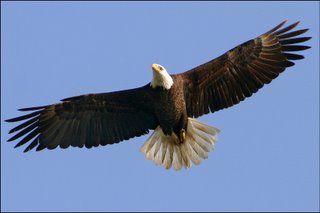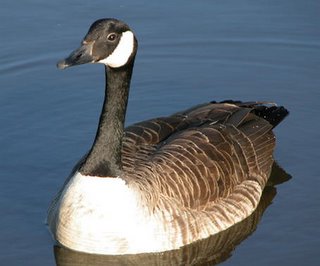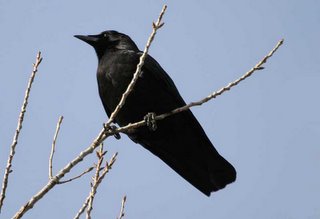The first trip into the field
Several locations on south and east sides of lake
January 1st, 2006...230-430pm
Once I woke up on New Year’s Day, Carmen told me about my correctly identifying the owl hooting in his yard earlier that morning, and we began talking birds. Turns out he just got himself a Peterson’s Field Guide so he could begin birding too. We both felt that our once robust hikes up Colorado 14ers would be put on hold for a bit as we each now had young families; he a boy that was 3 and a daughter that was 11 months, Lynne & I had Anna Grace at 2 & ¾ years, Robert at 6 months. Both of us felt short hikes, or drives to bird viewing areas might be more likely, for now, than long hikes or climbs up mountain slopes as we did together just a few years earlier.
As we compared notes, and took stock of the day that was unfolding, he suggested we take a short drive down to the Cherry Creek State Park and Reservoir that was less than a mile away. Everybody agreed it would be great to soak up some Colorado sun and take a short hike on this 50 degree New Year’s Day, so we left for the park after lunch.
The day got off to a quick birding start. On the drive over we saw a Great Horned Owl in a tree just inside the park near the West Entrance for the park, but as it was a bird Carmen already had, he didn’t stop the car for a true identification. That darn owl got away from me twice in one day. Why do I guess that this is going to happen many more times in my birding adventures with birds a lot more difficult to find. I gently chewed Carmen out about not stopping once he got us down to the Cottonwood Creek bird viewing area, where he was taking us in hopes to see some water foul on the reservoir. He laughed and asked if I wanted to drive back. I said no, and we hit the trail with families in tow.
We walked into the Cottonwood Creek area, and everywhere we looked we could see bird nests as we worked our way down to the water’s edge. I told Carmen this was going to be a great place to ID birds once migration and mating season arrived. He couldn’t have been more pleased. But today in the Cottonwood Creek area it was windy and nothing was to be seen or even heard. So Carmen suggested we go to the bird viewing area down by the water’s edge about a football field from where we were.
Once we got down to this viewing area I immediately spotted a large bird flying to the northwest from the wetlands preserve in the park that were just to our east. Holy shit, it was a BALD EAGLE. You can’t miss that large dark body, large white head and stark white tail. Of course I had seen many Bald Eagles through the years, especially on my two trips to Alaska, but here was my first 100% verifiable ID of my first bird as a birder: A Bald Eagle.

Carmen and I were thrilled.
Maybe it is because I am a big city boy who seldom sees such things in the city, or maybe it is because I grew up in small town middle America where my parents taught me great respect for such wonders, but I must say it never bores me and always thrills me to see a Bald Eagle in the wild. We watched it fly/soar casually to the center of the reservoir to some open water where it glided to a landing on the ice. Later we learned from others in the park that several other Bald Eagles were also seen there that afternoon. We only saw the one, that was wonder enough.
After seeing the Bald Eagle, we saw that the reservoir was frozen solid on the south side where we were, and Carmen decided we should head to the north east side of the reservoir at Dixon Grove. On our drive over we stopped to see a hawk or raptor of some kind flying on the edge of the wetlands preserve near the park office. Even though we stopped, neither of us was skilled enough to make an identification.

Upon reaching Dixon Grove, we saw quite quickly what our birding for the balance of our day together would be; CANADA GEESE (photo Steve Plant), gulls and crows. Okay, these were not the kinds of birding IDs I have ever read anything about in any of the bird books I have read thus far, but even the great Sandy Komito needed to ID these common birds on his way to 745 birds in his incredible Big Year of 1998.
 I never knew how hard gulls were to identify. I never knew how many types of gulls there were. But after some quick work together with our guide books the obvious ID was the RING-BILLED GULL (photo Keith Matts). We settled on this ID because of the four small but distinct white spots on the primaries when the gull was standing, the yellow legs, the dark ring on the yellow bill, and the white tips to on the top and bottoms of the black wing tips when the gull was in flight. Plus it was the only gull likely to be found in the Denver area this time of year. They weren’t shy either, so we got a number of real good looks at these gulls, there were dozens, maybe even two hundred or more of them in this lagoon area.
I never knew how hard gulls were to identify. I never knew how many types of gulls there were. But after some quick work together with our guide books the obvious ID was the RING-BILLED GULL (photo Keith Matts). We settled on this ID because of the four small but distinct white spots on the primaries when the gull was standing, the yellow legs, the dark ring on the yellow bill, and the white tips to on the top and bottoms of the black wing tips when the gull was in flight. Plus it was the only gull likely to be found in the Denver area this time of year. They weren’t shy either, so we got a number of real good looks at these gulls, there were dozens, maybe even two hundred or more of them in this lagoon area. The 3rd bird ID of the New Year was the AMERICAN CROW (photo Peter Vercruijsse). Again there were several dozen of them right in the area, the caaw was unmistakable, the tail feathers were short and rounded, and the flight was strong and direct. I have seen enough American Crows in my life to know them from the larger Common Ravens. Our 4th ID for the day was any one of the hundreds of Canada Geese I have grown up seeing since my first trip to Horicon Marsh in the late sixties (see first blog entry). On our way back to the car from the beach, I spotted the orange
The 3rd bird ID of the New Year was the AMERICAN CROW (photo Peter Vercruijsse). Again there were several dozen of them right in the area, the caaw was unmistakable, the tail feathers were short and rounded, and the flight was strong and direct. I have seen enough American Crows in my life to know them from the larger Common Ravens. Our 4th ID for the day was any one of the hundreds of Canada Geese I have grown up seeing since my first trip to Horicon Marsh in the late sixties (see first blog entry). On our way back to the car from the beach, I spotted the orange  underwing and gray head of a NORTHERN FLICKER (photo Chuck Roberts) in flight. As it turned in its rapid flight I could see its brown back with the bold narrow black bands on its back and upper wings along with its bright white rump. Being familiar with the bird made it an easy ID for bird number 5 of the day.
underwing and gray head of a NORTHERN FLICKER (photo Chuck Roberts) in flight. As it turned in its rapid flight I could see its brown back with the bold narrow black bands on its back and upper wings along with its bright white rump. Being familiar with the bird made it an easy ID for bird number 5 of the day.Finally, as we were driving back around the park to the west entrance, we made a quick stop at a
 pond to the east of the model plane airfield. There were a number of duck species there, but my 6 month old son Robert began acting up and we needed to hit the road to Summit County to meet our friends Liz & Rob whose condo we were going to stay at in Frisco. I was only able to positively ID a male MALLARD DUCK (photo Paul Vallender) for my 6th bird of the day on my first day of birding. Nothing fancy, but hard to miss the dark green sheen of its head, the white neck ring, and the brown breast. And so day one as a birder concluded with six positive bird IDs of:
pond to the east of the model plane airfield. There were a number of duck species there, but my 6 month old son Robert began acting up and we needed to hit the road to Summit County to meet our friends Liz & Rob whose condo we were going to stay at in Frisco. I was only able to positively ID a male MALLARD DUCK (photo Paul Vallender) for my 6th bird of the day on my first day of birding. Nothing fancy, but hard to miss the dark green sheen of its head, the white neck ring, and the brown breast. And so day one as a birder concluded with six positive bird IDs of:#1 BALD EAGLE
#2 RING-BILLED GULL
#3 AMERICAN CROW
#4 CANADA GOOSE
#5 NORTHERN FLICKER
#6 MALLARD DUCK male
Not Al Levantin’s 45 from his 1998 "Big Year" January 1st, but I am not him, nor do I ever expect to be, but I sure appreciated how his story has motivated me to learn more about how to be a birder.

0 Comments:
Post a Comment
<< Home